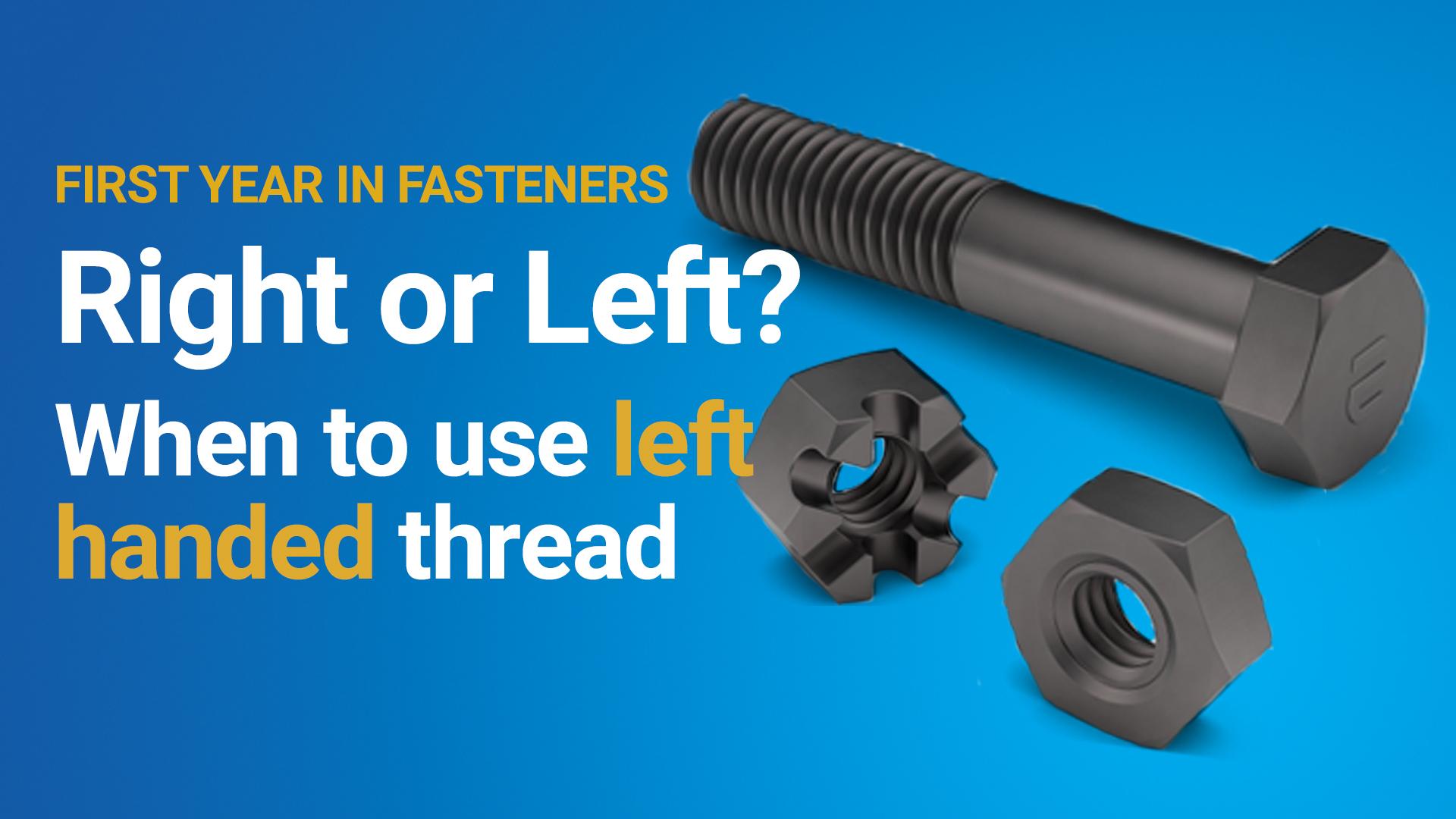
Lefty Loosey/Righty Tighty
Lefty-Loosey, Righty-Tighty? That’s the rule, right? Well, yes and no. Like every rule, there’s an exception. If you’ve got a rotating part, then a left-handed thread is what you want.
In talking with our fastener expert, Kevin Connolly, I learned a lot about left-handed thread this week. Somewhere down the line, it was decided that right-handed thread was standard. BUT in rotating parts, people noticed that a right-handed thread piece would spin clockwise, but then start to pull out slightly going counterclockwise after it stopped rotating, which means a problem of a loose part.
It was discovered that left-hand threaded parts were great for these rotating situations because they won’t back off like right-handed parts. To be clear, we don’t mean to say they should be considered “locking parts” – there’s no crimp that’s keeping left-handed parts in place (so unfortunately, “Lefty-Locking” isn’t necessarily the phrase that we can use as a counterpart to “Righty-Tighty”). Simply put, left-handed thread has more staying power which is important on rotating machinery.
At Earnest, we have both left-handed nuts and bolts available. We typically see left-handed nuts sold without bolts because our customers are using them in a shaft application such as a pulley, so a bolt isn’t needed. We also mark our left-handed nuts with an ‘LH’ or counterclockwise arrow. We also provide fully-threaded left-hand bolts which can be cut to any length.
Applications:
-
Grinding Wheels
-
Lathes (both Wood and Metal Lathes)
-
Stamping
-
Engines (Automotive, Agriculture, Construction)
Are there other applications not listed above? We'd love to know! Place comments below!
